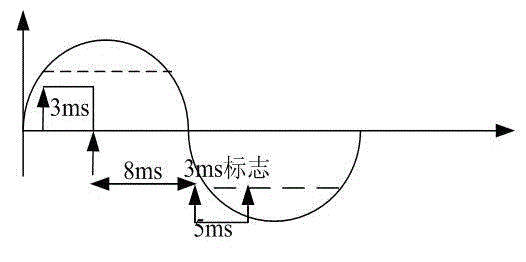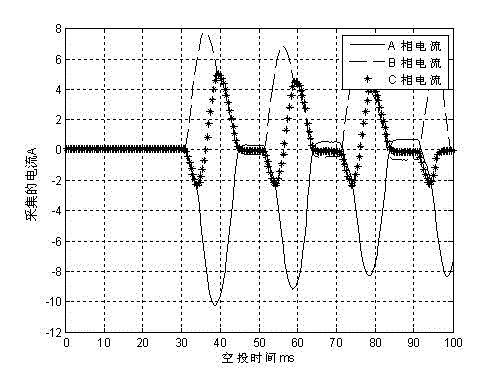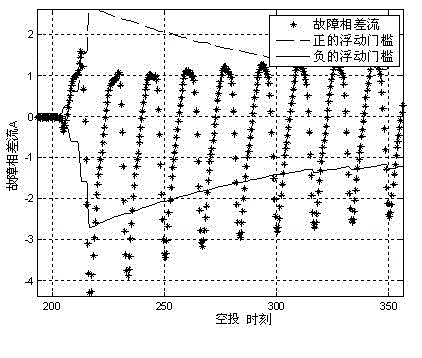Method for identifying excitation inrush current based on amplitude-comparison criterion
A technology of excitation inrush current and criterion, applied in the direction of electrical components, emergency protection circuit devices, etc., can solve the problems of differential protection misjudgment, difficulty in setting, difficulty in finding k value, etc., and achieve the effect of ensuring safe and stable operation
- Summary
- Abstract
- Description
- Claims
- Application Information
AI Technical Summary
Problems solved by technology
Method used
Image
Examples
Embodiment Construction
[0029] Take 40 sampling points per cycle as an example.
[0030] 1) During the airdrop process or when a fault occurs in the transformer, the waveform will contain a relatively large DC component. Consider removing the influence of the offset DC component. Dynamic current sampling for 6-point differential calculation
[0031] (1)
[0032] In formula (1) is the current differential current sampling, is the sampling of the first 6 points of the differential current, is the sampling current after differential current differential.
[0033] 2) Considering the most unfavorable case of the excitation inrush current of a large transformer, and taking into account the CT saturation delay of the fault outside the area, the differential current after the difference is integrated with 8 points
[0034] (2)
[0035] It is the integral value between 8 points after differential current differential.
[0036] 3) According to the current integral value, obtain the float...
PUM
 Login to View More
Login to View More Abstract
Description
Claims
Application Information
 Login to View More
Login to View More - R&D
- Intellectual Property
- Life Sciences
- Materials
- Tech Scout
- Unparalleled Data Quality
- Higher Quality Content
- 60% Fewer Hallucinations
Browse by: Latest US Patents, China's latest patents, Technical Efficacy Thesaurus, Application Domain, Technology Topic, Popular Technical Reports.
© 2025 PatSnap. All rights reserved.Legal|Privacy policy|Modern Slavery Act Transparency Statement|Sitemap|About US| Contact US: help@patsnap.com



